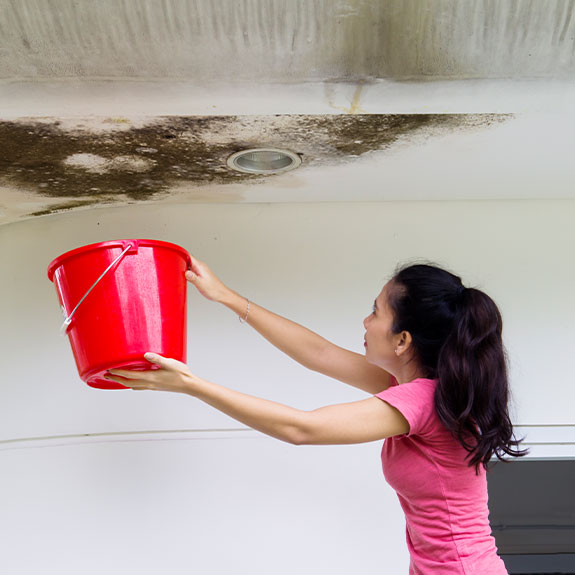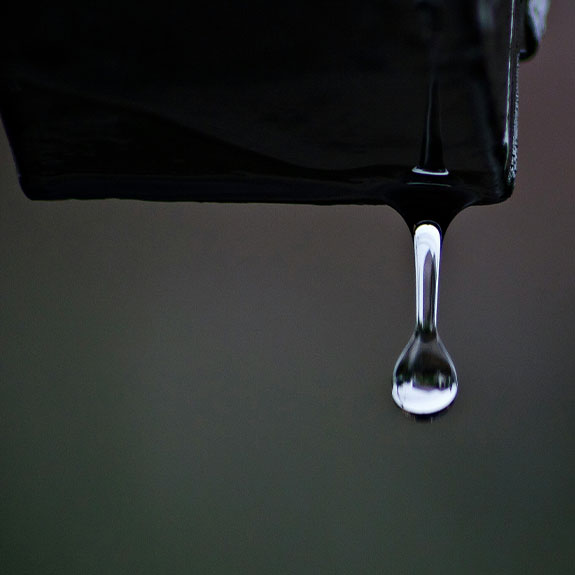Dealing with leaks and seepage in the home can be a real nightmare. Not only do they affect the aesthetics of the spaces, but they also represent a risk to the structure of the home and the health of those who live there. This article will help you identify, repair and prevent these problems, ensuring a dry and safe home.
Problem identification: Leaks or dampness?
Identifying the problem is key before taking action. Leaks are localized filtrations in roofs or walls, which usually appear with rain or water leaks. On the other hand, humidities appear as stains or accumulation of water, caused by condensation, capillarity or drainage problems.
To locate a leak, use a flashlight in the affected area or follow the water trail during rain. If you can’t wait, simulate the path with a hose.

How to repair leaks and seepage
Leaks and seepage may seem like a minor inconvenience, but if not addressed in time, they can become a real headache. Here’s how to address these repairs effectively, from the exterior to the interior of your home.
Repairs to roofs and terraces
If the leaks are coming from your roof or terrace, here are the essential steps to fix them:
- Clean the surface well: Before making any repairs, remove accumulated dirt, mildew and debris with a pressure washer. This not only improves the adhesion of the materials, but also leaves the area ready to work on.
- Fix cracks: If you find cracks, widen them a little and clean them carefully. This will help the sealant or waterproofing mortar set better.
- Waterproof the area: Apply products such as water-repellent mortars, elastic mastics or liquid resins in the joints and cracks. If the damage is more extensive, asphalt fabrics are an excellent solution to ensure lasting protection.
- Check downspouts and gutters: Make sure they are not clogged or leaking. Cleaning them regularly can save you a lot of trouble in the future.
Roof and chimney repairs
For roofs and chimneys, the steps are just as simple, but require attention to detail:
- Replace damaged shingles: If you find broken or displaced shingles, carefully remove them and replace them with others in good condition.
- Reinforce joints: Use high-quality sealants to reinforce joints around chimneys and gutters.
- Secure vulnerable areas: Install waterproof strips at points prone to leaks, such as joints between the roof and walls.
Repair of interior ceilings
If water is already entering your home, it’s time to take action indoors:
- Clean and dry the area: Before applying any product, make sure the surface is completely dry. A wet area will reduce the effectiveness of the materials.
- Temporary solutions: For emergencies, patching, waterproofing sprays or mastics are quick and easy to use options.
- Permanent repair: While a temporary fix may save the day, plan a more thorough repair to eliminate the root of the problem.
Key products for repairing leaks and seepage
Not all solutions are the same. Here are some materials that will be of great help to you:
- Epoxy fillers: Perfect for repairing small cracks.
- Waterproofing mortars: Ideal for covering large surfaces and reinforcing damaged joints.
- Polyurethane sealants: Very effective for areas such as chimneys, gutters and skylights.
- Asphalt roofing membranes: The best option for durable waterproofing rooftops and roofs.
- Fiberglass patches: A quick solution for spot cracks.
Consequences of not repairing leaks in time
Leaving a leak unrepaired may seem harmless at first, but the problems it can trigger go far beyond simple stains on the roof. Here are the main consequences of not acting in time:
- Structural damage: Seeping water progressively weakens building materials, which can lead to cracks, subsidence or, in extreme cases, the collapse of structures.
- Health problems: Moisture creates the perfect environment for fungi, mold and bacteria to grow, affecting the air quality in your home and causing respiratory problems or allergies.
- Increased costs: What could have been easily fixed, if addressed in time, can become a costly and complex repair.
- Electrical hazards: If water comes into contact with electrical installations, the risk of short circuits, blackouts and even fires increases.

Prevention of leaks and seepage
Prevention is always better than repair, and keeping leaks under control is not that complicated. Here are some practices that can make a difference:
- Regular inspection: Inspect roofs, gutters and rooftops at least once a year, especially before the rainy season.
- Constant cleaning: Remove leaves, dirt and other debris from gutters and drains to prevent them from clogging and causing leaks.
- Reinforce vulnerable areas: Check that the waterproofing system is in good condition. If you find cracks or worn areas, repair them immediately with appropriate materials.
- Act quickly: If you spot damp spots, bulges or any sign of a leak, don’t ignore it. A small problem can be fixed easily if you don’t let it go.
Repairing and preventing leaks not only protects your home, but also your health and your wallet. With the right materials and the right techniques, you can prevent a small inconvenience from becoming a major problem. At ParaTuReformaWe help you choose the best solutions to keep your home safe and dry. Ready to eliminate leaks from your life? Start now and transform your home into a moisture-free space!
How do I know if a leak is a serious problem?
If the leak persists or worsens over time, and is accompanied by cracks or mold, it is probably damaging the structure. It is essential to repair it as soon as possible.
What products are most effective for roof leaks?
Asphalt sheets, polyurethane sealants and elastic mastics are durable options for protecting roofs and gutters.
Is it possible to fix a leak temporarily?
Yes, you can use waterproofing sprays, patches or mastics for quick fixes, but it is important to make a permanent repair later.
How to avoid future leaks?
Conduct regular inspections, clean drains and ensure that vulnerable areas are reinforced with waterproof materials.
What do I do if the leak is in an inaccessible place?
In these cases, it is best to contact a professional to ensure a safe and effective repair.


